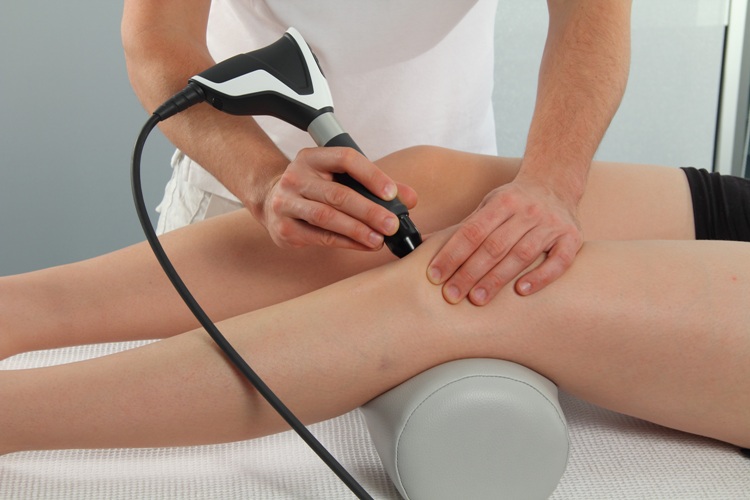Which conditions can Shockwave help with?
- Achilles tendinopathy
- Plantar fasciitis (heel pain)
- Patellar tendinopathy (jumper’s knee)
- Medial tibial stress syndrome (shin splints)
- Tennis (or golfers) elbow
- Sub-acromial pain syndrome(rotator cuff pain)
- Frozen shoulder
- Greater trochanteric pain syndrome (outer hip pain)
- Lower back pain
How successful is Shockwave Therapy?
Results vary depending on the condition being treated, ranging between 60-90% response rate. The benefit over other interventions, e.g. chronic tendinopathy and plantar fasciitis, is that long term outcomes (1 year +) are excellent, whereas most other interventions only work for a short period. Combining appropriate rehabilitation magnifies the effects and further reduces the chances of relapse. Shockwave Therapy is clinically proven, recognised by top orthopaedic hospitals and used by high-profile professional sports bodies.

Is Shockwave painful?
It is very different to ‘ultrasound’ and you will feel some discomfort, but this should be very tolerable.
How many sessions are needed?
Not all Shockwave is the same At South oxhey osteopaths, we use the best available technology – Swiss engineered Storz devices, used by the majority of experts, major NHS hospitals and elite sporting clubs across the world. Many devices are now coming to market that have not been supported by research, externally validated, or been CE marked for safety and effectiveness.
Can Shockwave Therapy treat old/ persistent injuries?
Yes, it can treat both long-term chronic conditions and newer injuries. There is substantial evidence to show that Shockwave Therapy can achieve great results even in conditions that have been present for many years.
Is Shockwave Therapy safe?
Yes, it has NICE guidance for a large number of indications and is used within the NHS. Shockwave Therapy performed by clinicians and appropriately trained health professionals is largely risk-free
What are the advantages of Shockwave Therapy?
Shockwave Therapy can be used in chronic conditions where other options have failed, instead of surgery or where surgery isn’t an option (e.g. due to certain health conditions or medications).
- Non-invasive
- No anaesthesia required
- No surgery scars
- No medication involved
- Proven to be safe
-
Significant clinical benefit –
often within a few weeks - Fast treatment times